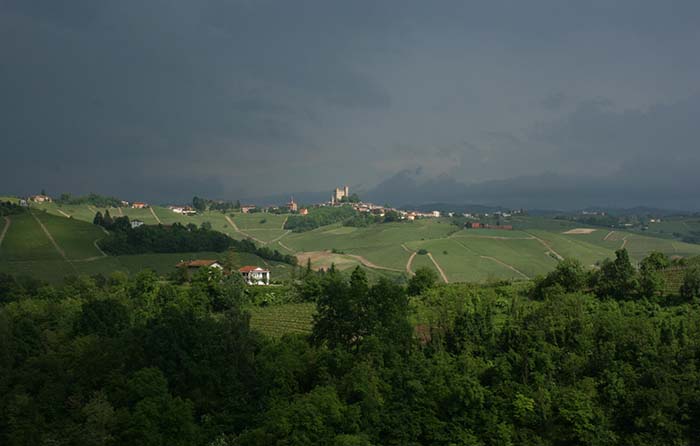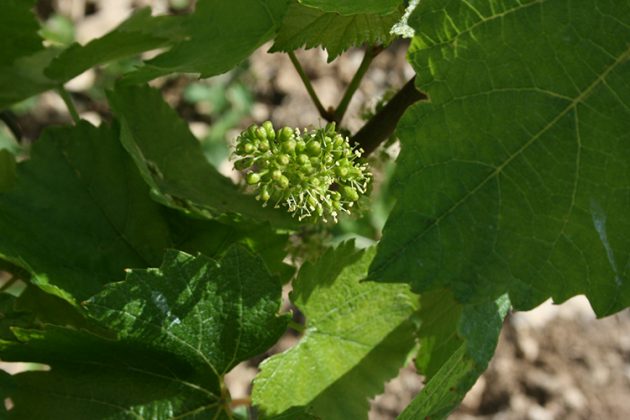The mood in Burgundy in the final week of June was as luminous as the skies.
Assuming that the region comes through the next 70 days of meteorological risk unscathed, then 2015 will be – as 2014 was – a harvest of satisfyingly ‘normal’ girth. Flowering was speedily successful this year. There is some powdery mildew (oidium) pressure in the vineyards, but not enough to trouble seasoned growers. The first week in July turned the heat up further – as well as bringing Burgundy’s climats their longed-for World Heritage Status.
The quality of the 2013 Burgundies, in any case, underscores just how adept many growers have become at shepherding their vines through a difficult season. In place of the tenuous wines such a season might have delivered a decade or two earlier, the results are often excellent, fully competitive with 2012, and more impressive in general than the sometimes scrawny 2011s. Summer’s warm end in 2013 helped. Most seasons in Burgundy – like most human lives – slip off the rails at some point or other. It’s best if the derailing happens earlier rather than later.
Tasting the poised, perfumed ripeness of Caroline Lestimé’s 2013 Chassagne Premier Cru Caillerets (at Jean-Noël Gagnard); or the impeccable fruit definition, ripeness and concentration of the 2013 Santenay Premier Cru Clos des Tavannes at Patrick Landanger’s Domaine de la Pousse d’Or was a shock. The 2013 Pousse d’Or Corton Bressandes was magnificent, too – but those are Rolls Royce soils; that Santenay could be so outstanding in 2013 was a surprise. (Jasper Morris writes, in his fine book Inside Burgundy, that this site ‘can be one of the classiest of Santenays, indeed tasting it blind one’s thoughts might wander towards the Côte de Nuits’. Quite.)
Up in Chablis, meanwhile, 2013 is widely accepted as a good vintage – the botrytis needed weeding out and, according to Vincent Dauvissat, the grapes often looked horrible, but the region’s magical balance and purity was there. I found other lessons up in Chablis, too.
Having tried three brilliant young Petit Chablis wines (the 2014, all lemons and stones, from Fèvre; Dauvissat’s own seaweedy 2013; and the pungent, almost percussive 2013 ‘Pas Si Petit’ from la Chablisienne), I realised that I had misunderstood this appellation. As the canny cooperative suggests, it isn’t ‘little Chablis’ at all, but a different sort of Chablis, usually from higher sited vineyards, and always from stonier limestone soils (those customarily called Portlandian) rather than the richer, more fossiliferous limestones typical of the region as a whole (usually described as Kimmeridgian). Climate change has worked in its favour, and there is no longer anything threadbare about it; indeed if I was sitting down to a plate of oysters, Petit Chablis like this would be my first choice. It comes clattering down like horseshoes on cobblestones, showering its acidic sparks into the saline flesh of the mollusc.
Why not a better name? Growers have searched, according to Hervé Tucki of La Chablisienne, but no one can find a satisfactory alternative. ‘Hautes Côtes de Chablis’ isn’t liked, and ‘Chablis Portlandien’ would need too many explanations. (Nowadays it should be Tithonien, or Tithonian in English; Portlandian is an archaic term.)
The delicious 2013 whites led me to think that I might even try buying a little white Burgundy all over again. I can’t be alone in having given this activity up a decade or more ago, disheartened by premox (or, if you prefer, random oxidation) problems, and the haphazard manner in which white Burgundy seemed to age. There is some evidence that the problem is lessening: after a near-catastrophic showing for the 2005s, those monitoring the problem for the ‘oxidised-burgs’ wikisite report that wines from the 2006 and 2007 vintages (with the notable exception of Domaine Leflaive) are proving less vulnerable than their forbears. See the reports of the Assessment Dinners held in Los Angeles here.
I won’t, though, be buying the grand white Burgundies which insist on age. Like many, I can’t afford them any more – but is there the same need? Something else has changed: Burgundy’s own high-latitude climate seems to have ripened.
I was with wine students in Burgundy, and described in my introductory remarks to them how white Burgundy was harder to taste than red in its youth due to its tautness and its inscrutability. Classic red Burgundy is built on fruit flavours in its youth; classic white almost seemed to get by on sap prior to its fifth birthday. (This difference is in part due to barrel-fermentation of the whites.)
What we then tasted over the course of the week, though, no longer bore this out. Modest bottles of white Burgundy, even from troubled recent vintages, seem to be more expressive and forthcoming in their youth than in the past, and less insistent in their demands for age than formerly. They ‘get there’ more quickly. Premox may therefore become, for many purchasers, a theoretical problem. If you don’t need to keep it, you run little risk of its oxidising. Just drink soon.
If you’re in the market for Caillerets, for Les Pucelles or for Montrachet, of course, then you should continue to keep your wines for a decade or more, and hope for the best: a great white grand cru cannot attain full articulacy in less. But for lesser mortals, low rollers and flighty chancers like me, it may be safe to tiptoe back into the water. Pay less; risk less; don’t wait. The shallows are more rewarding than they used to be.
Read more Jefford on Monday:

Jefford on Monday: Secrets of the Quilt

Jefford on Monday: The President and the Montravel Bomb

Jefford on Monday: Where do we go from here?






